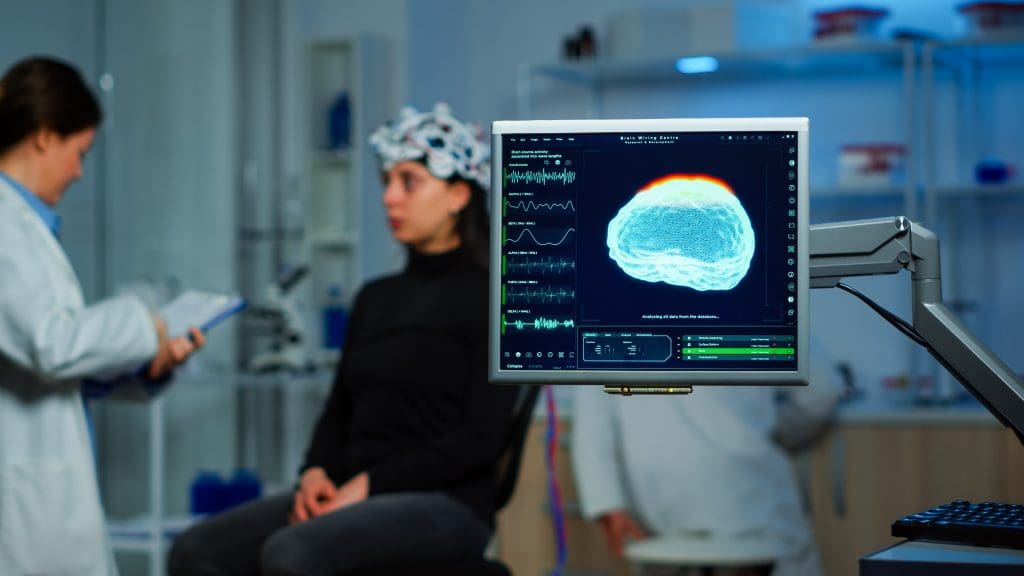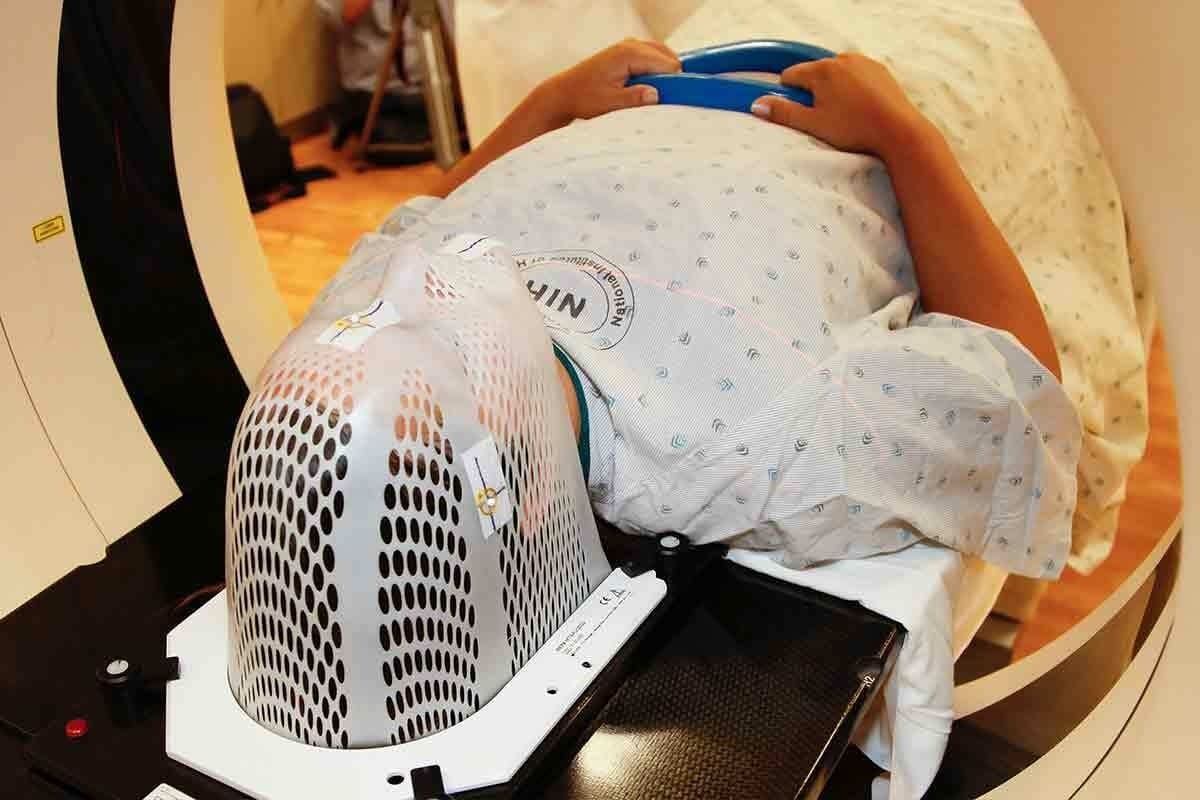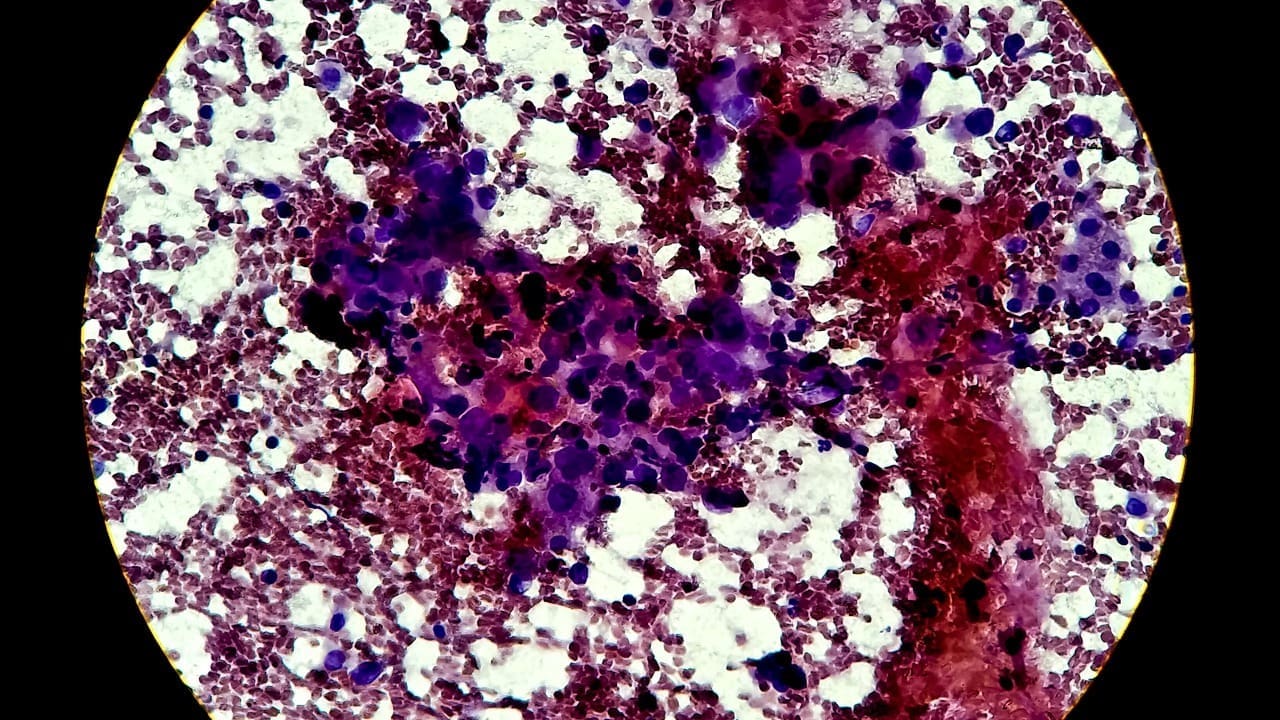Last Updated on November 27, 2025 by Bilal Hasdemir
Anxiety disorders affect millions of people worldwide, causing significant distress and making daily life hard. Because recent studies show anxiety has a biological foundation, a SPECT scan for anxiety can provide valuable insights into what makes each case different.
SPECT (Single Photon Emission Computed Tomography) brain imaging is a valuable tool. It helps understand the neural mechanisms behind anxiety disorders. By looking at prefrontal function, SPECT gives insights into the biological basis of anxiety.
Key Takeaways
- SPECT brain imaging can help detect anxiety disorders.
- Anxiety has a biological foundation that can be understood through brain imaging.
- Prefrontal function plays a key role in anxiety disorders.
- SPECT can provide valuable insights into the neural mechanisms of anxiety.
- Understanding the biological basis of anxiety can lead to more effective treatments.
Understanding SPECT Brain Imaging

SPECT imaging gives us a peek into the brain’s activity. It helps us see how different parts of the brain work.
What is SPECT Imaging?
SPECT is a way to check how well the brain’s blood flows. It shows which areas are working too hard or not enough. This functional imaging helps doctors understand brain function and find problems.
How SPECT Differs from Other Brain Imaging Techniques
SPECT is different from MRI or CT scans. It looks at how the brain works, not just its structure. This makes SPECT great for seeing perfusion patterns and activity in the brain.
The Science Behind SPECT Technology
The process starts with a radiotracer injected into the blood. As it decays, it sends out gamma rays. The SPECT camera catches these rays.
Radiotracer Function
The radiotracer builds up in the brain based on blood flow and activity. This buildup helps create detailed images of brain function.
Image Acquisition Process
The SPECT camera captures the gamma rays. A computer then makes 3D images of brain activity. These images tell us a lot about the brain’s function.
The Neurobiology of Anxiety Disorders
Anxiety is more than just feeling scared or worried. It’s a brain issue, involving areas like the amygdala and hippocampus. The brain’s biology in anxiety disorders is complex, with many areas and chemical processes involved.
Brain Regions Involved in Anxiety
Many brain areas are linked to anxiety disorders. The limbic system, which includes the amygdala and hippocampus, is key in handling emotions.
The Role of the Amygdala
The amygdala spots threats and starts the fear response. In people with anxiety, the amygdala is often hyperactive. This makes their fear response too strong.
Hippocampal Involvement
The hippocampus helps form memories and is also affected by anxiety. Studies show that the hippocampus is smaller in those with post-traumatic stress disorder (PTSD).
Neurochemical Factors in Anxiety
Chemicals like serotonin and GABA are key in controlling anxiety. When these chemicals are out of balance, it can lead to anxiety disorders.
| Neurotransmitter | Role in Anxiety |
| Serotonin | Regulates mood and anxiety |
| GABA | Inhibits neuronal activity, reducing anxiety |
Structural vs. Functional Abnormalities
Anxiety disorders can stem from brain structure or function issues. Knowing the difference is key to finding the right treatment.
Prefrontal Function and Its Role in Anxiety
The link between prefrontal function and anxiety is complex. The prefrontal cortex helps with rational thinking and controlling impulses. It plays a key role in managing emotions and anxiety.
Understanding Prefrontal Cortex Anatomy
The prefrontal cortex is made up of different parts that work together. Understanding its anatomy is key to understanding its role in anxiety disorders.
How Prefrontal Function Regulates Emotions
Prefrontal function is vital for controlling emotions. It does this by managing other brain areas, like the amygdala. When it works well, it helps reduce anxiety by promoting rational thinking.
Prefrontal Dysfunction in Anxiety Disorders
Dysfunction in the prefrontal cortex is linked to many anxiety disorders. This includes issues in the dorsolateral prefrontal cortex and ventromedial prefrontal cortex.
Dorsolateral Prefrontal Cortex
The dorsolateral prefrontal cortex handles working memory and executive function. Problems here can cause poor cognitive processing and more anxiety.
Ventromedial Prefrontal Cortex
The ventromedial prefrontal cortex is important for managing emotions and making decisions. Issues here can lead to poor emotional control and more anxiety.
Assessing prefrontal function can help understand anxiety disorders better. It can guide diagnosis and treatment.
How SPECT Detects Brain Activity Patterns
SPECT in neuroimaging shows brain perfusion patterns. This is key for understanding neurological conditions. It lets doctors see brain areas that work well, too hard, or not enough.
Perfusion Patterns Revealed by SPECT
SPECT scans show blood flow in the brain. This is vital for checking brain activity. Perfusion patterns from SPECT can show hyperperfusion or hypoperfusion. These are important for diagnosing anxiety disorders.
Interpreting SPECT Images
Reading SPECT images needs skill. It’s about looking at perfusion patterns and finding oddities. Doctors search for brain areas with unusual activity. This can point to anxiety disorders.
Identifying Abnormal Limbic Activity
The limbic system is key for emotional control. Problems here are linked to anxiety. SPECT imaging spots abnormal limbic activity. This is key for diagnosis and treatment.
Hyperperfusion vs. Hypoperfusion
Knowing the difference between hyperperfusion and hypoperfusion is important. Hyperperfusion means areas are very active. Hypoperfusion shows areas that are not working right.
SPECT Findings in Different Anxiety Disorders
Anxiety disorders show up differently in the brain. SPECT imaging helps spot these differences. It looks at brain activity to help doctors tell anxiety conditions apart. This leads to better diagnoses and treatments.
Generalized Anxiety Disorder
In Generalized Anxiety Disorder (GAD), SPECT scans show brain areas like the amygdala and prefrontal cortex are too active. This means the brain is overworking, causing too much worry and anxiety.
Panic Disorder
Panic Disorder shows unique patterns on SPECT scans. These patterns point to increased activity in fear circuits, like the amygdala and insula. This helps doctors tell it apart from other anxiety disorders.
Social Anxiety Disorder
Social Anxiety Disorder affects brain areas for social thinking and fear. SPECT scans might show the amygdala is too active and emotion control areas are less active.
Post-Traumatic Stress Disorder
PTSD has its own SPECT patterns. These include too much activity in the limbic system and changes in the prefrontal cortex. These changes are linked to PTSD symptoms like reliving the trauma and being always on edge.
Distinguishing PTSD from Other Anxiety Conditions
It’s hard to tell PTSD apart from other anxiety disorders because symptoms can be similar. But SPECT imaging can spot specific brain patterns for PTSD. This includes more activity in the limbic system and different patterns in the prefrontal cortex.
SPECT’s ability to show brain activity differences is key in diagnosing anxiety disorders. It helps doctors make accurate diagnoses and choose the right treatments.
The Patient Experience: Undergoing SPECT for Anxiety Assessment
Getting a SPECT scan for anxiety involves several steps. From preparation to analyzing the results, knowing what to expect can ease worries. It makes the experience smoother.
Preparation for a SPECT Scan
Before the scan, patients are told to avoid certain meds and substances. They should wear comfy clothes and remove jewelry or metal. This helps the scan work better.
What Happens During the Procedure
During the scan, you lie on a table that slides into a gamma camera. It’s safe, but some might feel anxious. This is because of claustrophobia or needing to stay very quiet. The scan takes pictures of your brain’s activity, helping with clinical assessment.
Post-Scan Process and Results Interpretation
After the scan, experts analyze the images. They look for brain activity patterns linked to anxiety. This info is key for mental health evaluation and helps decide treatment.
Managing Anxiety About the Procedure Itself
Some might worry about the scan. Doctors explain it all and offer comfort. Deep breathing or relaxation can also help calm nerves.
Knowing about the SPECT scan helps prepare for it. It’s a key tool in diagnosing and treating anxiety disorders.
Clinical Applications of SPECT in Mental Health Evaluation
SPECT imaging is a key tool in clinical assessment for mental health. Studies show it’s reliable for checking brain function. This helps find the right diagnosis and treatment for each patient.
Diagnostic Applications
SPECT is vital in differential diagnosis of mental health issues. It looks at brain activity to tell apart different disorders. This is important because some disorders have similar symptoms.
Treatment Planning Based on SPECT Results
SPECT scans give valuable info for treatment planning. They show which brain areas are affected. This lets doctors create treatment plans that fit each patient’s needs.
Monitoring Treatment Response
SPECT also helps track how treatments work over time. It lets doctors make changes to plans as needed. This helps improve patient results.
Case Studies of Treatment Optimization
Case studies show SPECT’s role in treatment planning. For example, a patient with anxiety improved after their treatment was adjusted based on SPECT results.
Using functional imaging like SPECT, doctors can make more accurate diagnoses. They can also create targeted treatment plans. This leads to better results for patients.
Differential Diagnosis Using SPECT Imaging
SPECT imaging is key in psychiatric diagnosis, showing brain activity patterns. It helps in telling different conditions apart when symptoms are similar. It’s very useful in spotting anxiety disorders and differentiating them from other mental health issues.
Distinguishing Anxiety from Depression
It’s hard to tell anxiety from depression because they share symptoms. SPECT imaging can spot unique brain patterns for each. For example, anxiety shows more activity in the limbic system, while depression might show less in the prefrontal cortex.
Identifying Comorbid Conditions
Many people have symptoms of more than one mental health issue at once. SPECT imaging helps find these by showing brain patterns for each problem. This is key for making treatment plans that cover all a patient’s needs.
SPECT Patterns in Anxiety vs. Other Psychiatric Disorders
SPECT imaging shows how anxiety disorders differ from other mental health issues. Anxiety often shows more activity in the amygdala and other parts of the brain. Other conditions, like OCD, might show different patterns in the orbitofrontal cortex and basal ganglia.
Challenges in Differential Diagnosis
Even with SPECT imaging, there are challenges. Reading SPECT images needs special training, and there’s a chance of misreading them. It’s not used alone for diagnosis; it’s part of a bigger process that includes clinical evaluation and other tests.
In summary, SPECT imaging is a big help in making diagnoses. It shows brain activity patterns that help tell anxiety disorders apart from other mental health issues. Knowing its strengths and limits helps doctors make better diagnoses and treatment plans.
Limitations and Challenges of SPECT in Anxiety Detection
SPECT imaging gives us valuable insights into brain activity. Yet, it has its limits in spotting anxiety disorders. It’s key for doctors and patients to know these limits.
Technical Limitations
SPECT tech faces several technical hurdles in finding anxiety. The quality of images and detector sensitivity are big issues. High-resolution images are key for accurate diagnosis. But, SPECT’s images are not as sharp as MRI’s.
Interpretation Challenges
Reading SPECT images needs a lot of skill. Interpretation can vary, leading to different diagnoses and treatment plans.
Cost and Accessibility Issues
SPECT scans are pricey, and not many places offer them. This makes it hard for some to get the scan.
Insurance Coverage Considerations
Insurance can cover SPECT scans differently. Pre-approval processes can slow down getting a diagnosis and treatment.
Standardization Problems
There’s a need for standard SPECT protocols. Standardization would make SPECT scans more reliable for finding anxiety.
Conclusion: The Future of SPECT in Anxiety Diagnosis and Treatment
SPECT brain imaging is becoming a key tool in fighting anxiety disorders. It helps doctors see how the brain works and find the right treatments. This way, SPECT can make diagnosing and treating anxiety better.
SPECT can spot brain activity linked to anxiety. This means doctors can create treatment plans that really work for each patient. It shows how the brain acts differently in people with anxiety, helping doctors figure out what’s wrong.
As scientists learn more about anxiety, SPECT’s role will grow. It will help us understand anxiety better and find new treatments. This could lead to better care for people with anxiety.
FAQ
What is SPECT imaging and how does it work?
SPECT (Single Photon Emission Computed Tomography) is a way to see how the brain works. It uses a tiny amount of radioactive tracer in the blood. This tracer lights up brain cells, and a camera catches these lights to make 3D images.
How does SPECT differ from other brain imaging techniques like MRI or CT scans?
SPECT shows how the brain works, not just what it looks like. MRI and CT scans show the brain’s structure. SPECT looks at blood flow and how brain cells work.
Can SPECT detect anxiety disorders?
Yes, SPECT can spot changes in brain activity linked to anxiety. It looks at blood flow in areas like the limbic system and prefrontal cortex.
What brain regions are involved in anxiety disorders?
Anxiety affects many brain areas, like the amygdala and hippocampus. These areas help control emotions and thoughts. Problems here can lead to anxiety.
How does prefrontal function relate to anxiety?
The prefrontal cortex helps manage emotions and decisions. When it doesn’t work right, it can cause anxiety. This is because it can’t control emotions well.
What are the clinical applications of SPECT in mental health evaluation?
SPECT helps doctors diagnose and plan treatments for mental health issues. It shows how the brain works, helping doctors understand and treat conditions.
How is SPECT used in differential diagnosis?
SPECT helps doctors tell different mental health issues apart. It looks at brain activity patterns to identify conditions like anxiety and depression.
What are the limitations and challenges of using SPECT in anxiety detection?
SPECT has some downsides, like technical issues and cost. It’s also not always easy to understand the results. Insurance and access can also be problems.
How does SPECT imaging contribute to the diagnosis and treatment of anxiety disorders?
SPECT gives doctors a detailed look at brain activity in anxiety. This helps them create better treatment plans.
What is the future of SPECT in anxiety diagnosis and treatment?
As technology gets better, SPECT will likely be more important in treating anxiety. It will give doctors even more detailed information about the brain.






